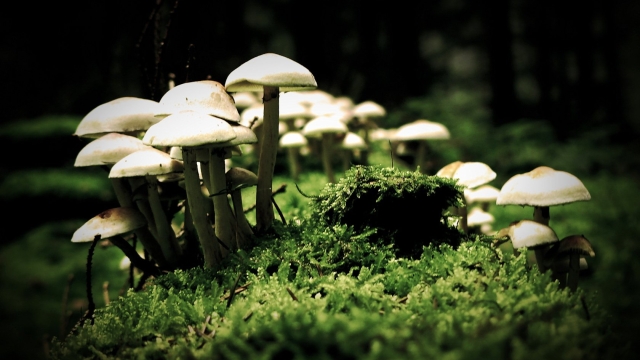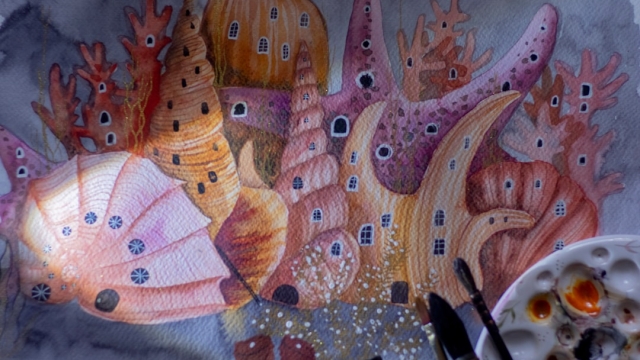The Fungus Among Us: Unveiling the Secrets of Mushroom Growing

Mushroom growing has always had an air of mystery surrounding it, captivating both amateur gardeners and seasoned horticulturists alike. As we delve into the depths of this fascinating world, we uncover a myriad of secrets hidden within the intricate process of cultivating these enchanting fungi. From the humble button mushroom to the exotic shiitake and oyster varieties, mushroom growing offers a remarkable journey of discovery, combining science, nature, and a touch of magic.
At first glance, growing mushrooms may appear daunting, reserved for experts with specialized knowledge. However, with the right guidance and a bit of patience, anyone can embark on this rewarding endeavor. It all starts with understanding the life cycle of mushrooms and the environmental conditions necessary for their growth. From the dark, damp corners of the forest to the controlled environment of our own homes, we can recreate the ideal setting for mushrooms to flourish.
With the proper tools and techniques in our arsenal, we can unlock the secrets of mushroom cultivation. Substrate preparation, spawn inoculation, and creating the perfect humidity and temperature levels are just a few of the essential steps in this exquisite dance between nature and nurture. As we embark on this adventure, we uncover the intricacies of feeding the mycelium, fostering its growth, and witnessing the enchanting emergence of delicate caps, embodying a world of flavors and textures.
Mushroom growing transcends the boundaries of mere gardening; it is an art form that requires a delicate balance of knowledge and intuition. It allows us to connect with nature in profound ways, as we witness the magic of these elusive beings unfolding before our eyes. So, join us in unveiling the secrets of mushroom growing, as we dive into this captivating journey into the fungal realm, where nature’s hidden wonders come to life right in our own homes.
Choosing the Right Mushroom Varieties
When it comes to mushroom growing, selecting the right mushroom varieties is crucial for a successful harvest. The type of mushroom you choose will depend on various factors such as your growing conditions, desired flavors, and market preferences. In this section, we will explore three popular mushroom varieties that are well-suited for cultivation.
-
Button Mushroom:
The button mushroom (Agaricus bisporus) is one of the most widely cultivated mushroom varieties. Known for its mild and versatile flavor, it is a favorite choice for both home gardeners and commercial growers. Button mushrooms are relatively easy to grow and adapt well to different growing mediums. They thrive in a temperature range of 55-65°F (13-18°C) and prefer a humid environment. -
Oyster Mushroom:
Oyster mushrooms (Pleurotus spp.) are sought after for their delicate texture and unique flavors. These mushrooms come in various colors, including white, gray, and golden. Oyster mushrooms are known for their high nutritional value and are often used in culinary dishes. They grow well on a variety of substrates, making them a versatile option for mushroom cultivation. Oyster mushrooms prefer temperatures around 65-75°F (18-24°C) and require higher humidity levels. -
Shiitake Mushroom:
The shiitake mushroom (Lentinula edodes) is a popular choice among mushroom enthusiasts. With its robust flavor and meaty texture, shiitake mushrooms add depth to a range of recipes. Originating from East Asia, shiitake mushrooms have a long history of cultivation. They thrive on hardwood logs or artificial substrates that mimic the natural environment. Shiitake mushrooms prefer a slightly cooler temperature range of 50-65°F (10-18°C) and require moderate humidity levels.
By carefully choosing the right mushroom varieties based on your specific requirements and conditions, you can set yourself up for a successful and rewarding mushroom growing experience. Experimenting with different varieties can also add excitement and diversity to your harvest. The next section will delve into the essential steps of preparing the growing medium for your chosen mushroom varieties.
Creating the Ideal Growing Environment
When it comes to mushroom growing, creating the ideal environment is crucial for success. The right conditions will encourage healthy growth and maximize yields. Here are three key factors to consider when setting up your mushroom cultivation space:
-
Temperature: Mushrooms are sensitive to temperature and thrive within a specific range. Most varieties prefer temperatures between 55-75 degrees Fahrenheit (13-24 degrees Celsius). It’s important to maintain a consistent temperature throughout the growing process to avoid stunted or delayed growth.
- Mushrooms Golden Teacher
Humidity: Adequate humidity levels are essential for the development and fruiting of mushrooms. Generally, a relative humidity of 80-90% is required during the initial stages, while a slightly lower range of 70-85% is ideal for fruiting. To maintain optimal humidity, misting the growing area regularly or using a humidifier can be beneficial.
-
Light: Unlike plants, mushrooms do not require light for photosynthesis. In fact, exposure to direct sunlight can be detrimental. Instead, mushrooms thrive in dim or indirect light conditions. To provide the necessary light, you can use low-intensity artificial lighting or ambient light from nearby windows.
By carefully controlling these three factors – temperature, humidity, and light – you can create the ideal environment for mushroom growing. Remember to monitor and adjust these conditions as needed throughout the different stages of cultivation to achieve the best possible results.
Harvesting and Storing Mushrooms
When it comes to mushroom growing, harvesting and storing your precious fungi is an essential step. Properly harvesting and storing mushrooms will ensure that you can enjoy them for a longer period of time. Here are some tips to keep in mind:
-
Timing is Everything: Harvesting mushrooms at the right time is crucial. Depending on the variety, mushrooms are typically ready for harvesting when the caps have fully opened but haven’t yet released their spores. It’s best to harvest them before they start to decay or become overly mature.
-
Gentle Handling: When harvesting mushrooms, it’s important to handle them delicately. Avoid pulling or tugging on the mushrooms as this can damage the delicate mycelium beneath the soil. Instead, gently twist or cut the mushrooms at the base of their stems. This method ensures minimal damage and promotes healthy regrowth for future harvests.
-
Proper Storage Conditions: To maximize the shelf life of your harvested mushrooms, it’s crucial to store them correctly. Mushrooms are known for their high moisture content, so it’s best to place them in a paper bag or a breathable container that allows air circulation. Avoid using plastic bags, as these can trap moisture and lead to unwanted moisture buildup, causing the mushrooms to spoil quickly.
With these tips in mind, you’ll be able to successfully harvest and store your homegrown mushrooms, preserving their freshness and flavors until you’re ready to enjoy them in your favorite recipes. Happy mushroom growing!
Remember, mushrooms are not only delicious but also packed with valuable nutrients. Harvesting and storing them properly will ensure that you can savor their unique taste and reap their benefits for as long as possible. Enjoy the wonderful world of mushroom growing!


